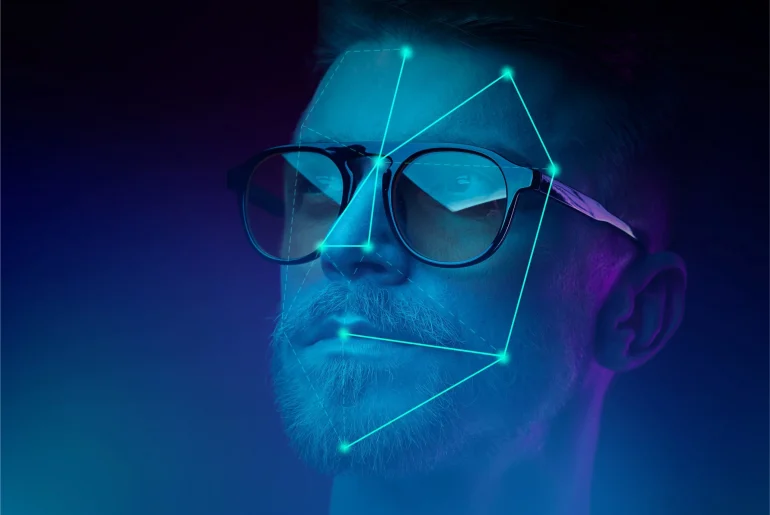Facial Recognition as a progressive Cloud Video Analytics Option
The iPhone Face ID screen unlock feature introduced facial recognition technology into everyday life after it first appeared in science fiction stories and films. The technology of facial recognition now enables financial transactions through its implementation. The verification process of ApplePay uses facial recognition to authenticate your identity for transaction approval. Most iPhone financial applications need users to authenticate through biometric methods. Before accessing their accounts although some systems allow passwordless access. The company Apple stands as a leading innovator in its field. The following section examines Facial recognition in cloud video surveillance technology and the range of its adoption in everyday life and business processes.
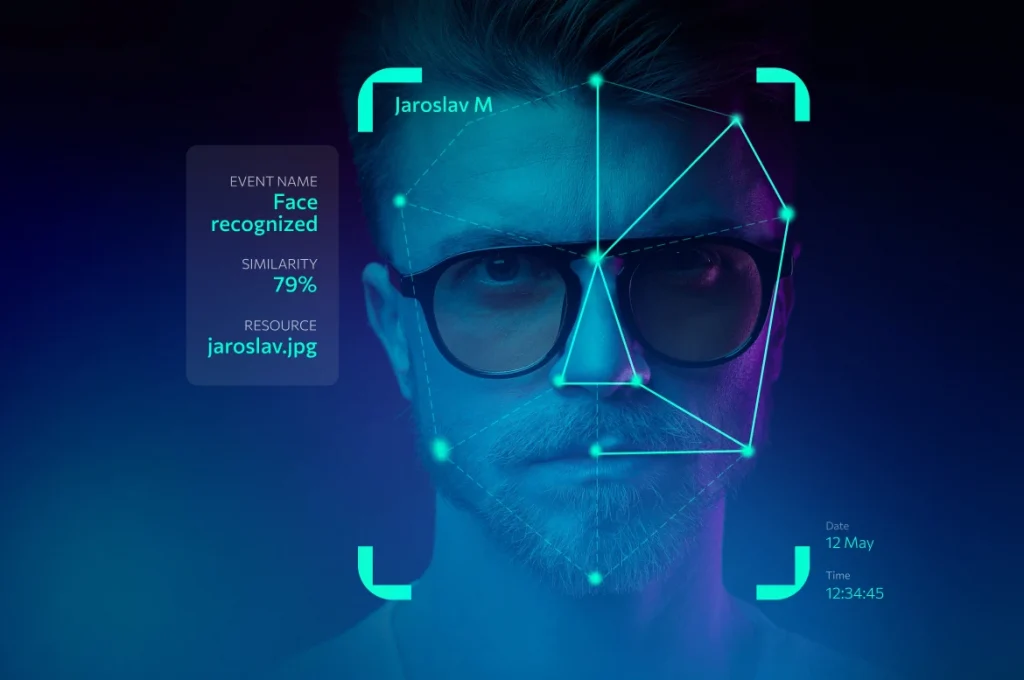
And before facial recognition technology was essential in our personal lives, it was first used for access control, public safety, and business operations.
Facial recognition in cloud video surveillance and video analytics demand
Businesses find video surveillance systems with smart video analytics to be an extremely useful asset. The systems deliver advanced security capabilities which help organizations achieve better protection of their assets. The systems enable businesses to convert their video monitoring systems into operational assets which generate value for their operations.
Statistics also presents the perceptiveness of video analytics service. The video analytics market size is expected to grow from USD 8.3 billion in 2023 to USD 22.6 billion by 2028 at a Compound Annual Growth Rate (CAGR) of 22.3%, according to data from ResearchAndMarkets.com.
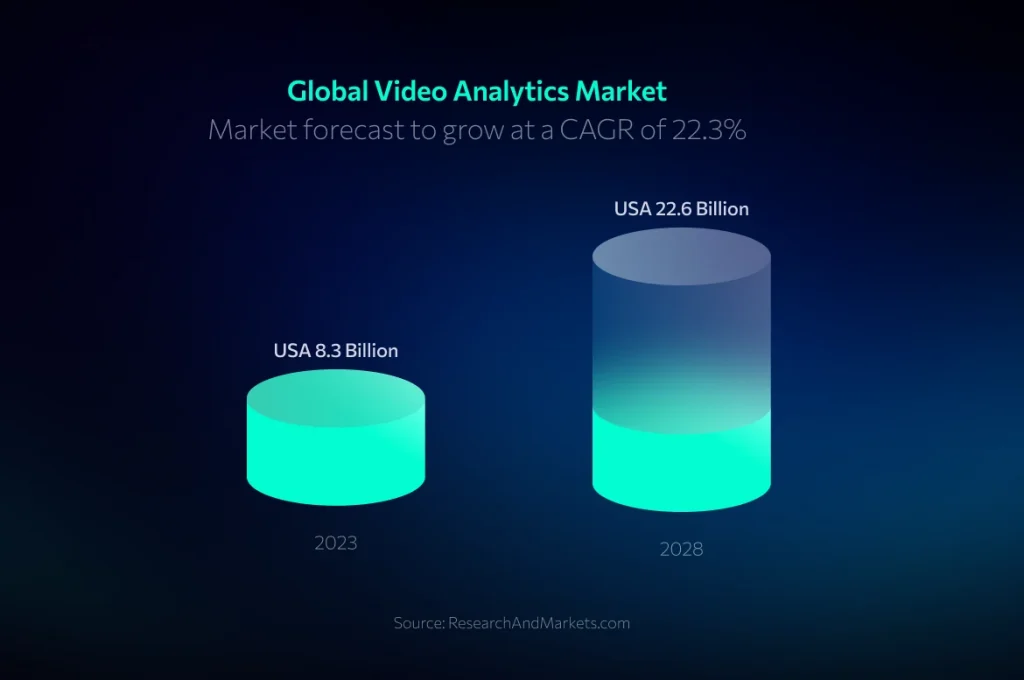
Telecom operators can use video analytics capabilities to create complete cloud-based multi-service solutions for their B2B clients because the world is shifting toward service-based models (EaaS, XaaS). Telecom providers can deliver a powerful solution to B2B subscribers through their cloud infrastructure by making video analytics and surveillance features accessible to their subscribers. The advanced video analytics capabilities become accessible to businesses through this solution which enables them to achieve related advantages.
The most common application of video analytics through facial recognition technology exists in the market today. Facial recognition technology delivers these capabilities to users:
- substantial cost savings for businesses through enhanced security
- improved operational efficiency
- personalized customer experiences
- reduced fraudulent transactions
- streamlined access management
- enhanced regulatory compliance
- reduced staffing costs.
The technology enables businesses to safeguard their assets while simultaneously enhancing operational efficiency which leads to sustained financial gains.
Requirements and challenges of implementing facial recognition as a demanded cloud video analytics option
It should be noted, for facial recognition, some challenges exist before full implementation.
- Camera Guidelines and Requirements. The system requires cameras to follow particular standards for image quality and viewing angles and infrared illumination to achieve accurate face recognition.
- Privacy Concerns. The initial introduction of fingerprint scanners generated worries among users because they felt vulnerable to losing their fingerprints. It is personal information. The practice of facial recognition for public identification and tracking of people’s movements has sparked concerns about both surveillance activities and individual privacy protection.
- Data Security and Leaks. A breach of a facial recognition database could lead to the misuse of personal biometric data on a large scale, necessitating robust data protection measures.
- Environmental Conditions. The accuracy of facial recognition systems depends on software that adapts to different lighting conditions and shadow effects and environmental elements.
- Facial Occlusion. Neural networks need extra training to achieve accurate facial recognition because of factors that include hats and glasses and beards and masks.
- Diversifying Databases. Ensuring facial recognition systems are trained on diverse datasets covering different genders, races, and age groups is crucial for detailed and accurate recognition.
- Liveness Detection. Implementing features like eye and attention tracking is important to prevent spoofing. Also it ensures the system is not being fooled by images or other means.
- Hybrid Solutions. Combining face recognition with human oversight at certain checkpoints can help ensure accurate identification and consent.
The correct implementation of facial recognition technology enables both security advantages and operational efficiency but it requires proper execution. The software platform’s cloud video analytics service benefits from embedded deep learning processing power which eliminates all these problems. The combination of unlimited processing power with video streaming enables users to avoid technical problems.
Benefits of using face recognition in cloud video surveillance
The main advantage of smart video surveillance systems with facial recognition technology enables real-time identification of people in the area. The system enables organizations to optimize their personnel distribution which results in faster responses and decreased ongoing operational expenses. The technology generates immediate alerts when it detects pre-set VIPs or restricted persons entering a facility. So security personnel can help the VIP or stop unauthorized access.
The system uses face recognition technology to enhance business operations and maintain security measures. The system tracks customer movement patterns and interaction times to generate useful data about shopping behaviors and customer preferences. The collected data enables organizations to make strategic choices about store design and product placement and personalized advertising approaches. The system detects recognized shoplifters and suspicious people which enables staff to receive security alerts for better crime prevention and loss reduction.
The technology allows emergency responders to quickly identify participants which helps them access important information to coordinate better responses during security emergencies. The system provides maximum value to high-risk sites such as schools and hospitals and government facilities because it supports active security management.
Furthermore, facial recognition can be integrated with access control systems to provide frictionless and secure entry for authorized personnel, improving convenience and compliance with safety protocols.
Most Common Use Cases of a Most Demanded Cloud Video Analytics by Industry Niches
The most beneficial use cases of facial recognition technology can be seen in how it has been implemented across various industries.
Facial recognition in Retail
The implementation of Facial recognition functionality in retail stores provides substantial benefits for business operations and security needs. The system recognizes returning customers to deliver customized service and specific deals and automatic loyalty program access which results in enhanced customer satisfaction.
The Video Analytics operates at faster speeds to handle payments and minimize lines while optimizing operational performance for better customer satisfaction. It provides enhanced security through real-time offender detection which enables immediate security alerts and stops unauthorized entry into restricted zones.
The systems like Aipix speeds up incident investigations through video analysis and employee verification which results in a protected and efficient operational space.
The facial recognition opportunities in Hospitality
The hospitality industry will experience a complete transformation of guest experiences through the implementation of facial recognition technology. Hotels can use this technology to create a completely automated check-in system that provides guests with a modern and efficient experience.
The system recognizes guests as they arrive which allows hotels to provide individualized greetings and quick registration services and customized room settings according to their preferences. The new AI recognition system eliminates conventional front desk operations to deliver guests a smooth and efficient and customized hospitality experience. The hotel will achieve superior guest satisfaction through its advanced personalization features which will make it stand out from other establishments.
Facial recognition in cloud video surveillance in Healthcare
The healthcare sector employs facial recognition technology to identify patients through their facial features. The advanced video surveillance prevents medical mistakes by providing precise patient care management.
The system provides two security benefits through its ability to restrict access to protected zones and track employee presence to verify their adherence to scheduled working times. The implemented applications boost operational performance while delivering better healthcare services.
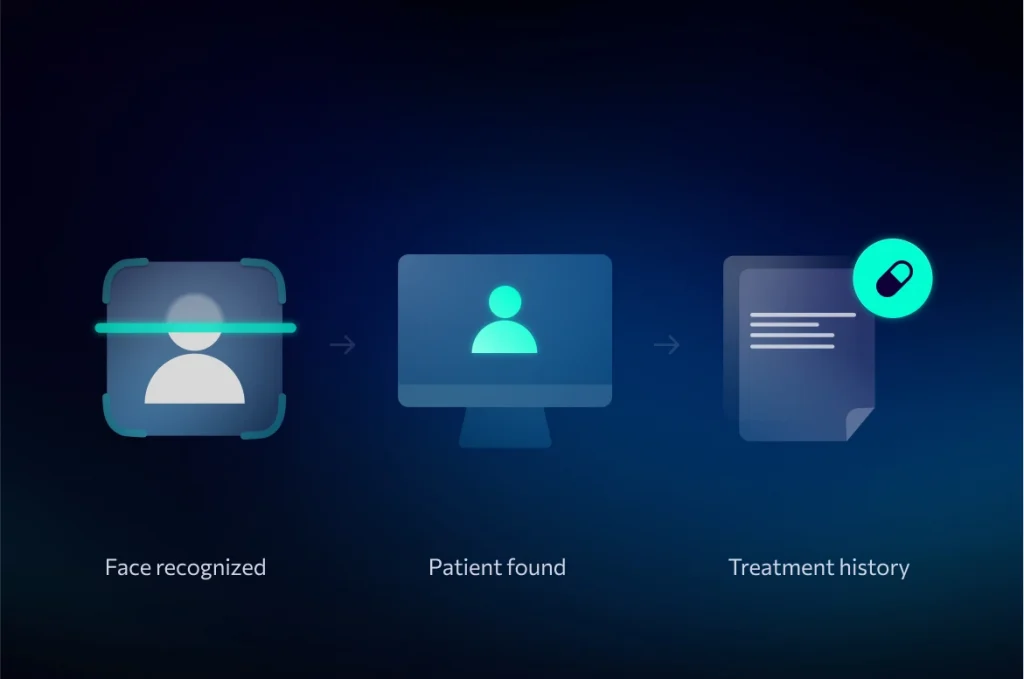
The Facial recognition importance in Banking and Finance
The banking and finance industry employs facial recognition technology to stop fraud attempts through identity verification during all financial transactions. The system provides protected entry to banking services and confidential data while making it easier for customers to verify their identities at bank locations.
VAaaS Platform provides better security measures and improved customer confidence.
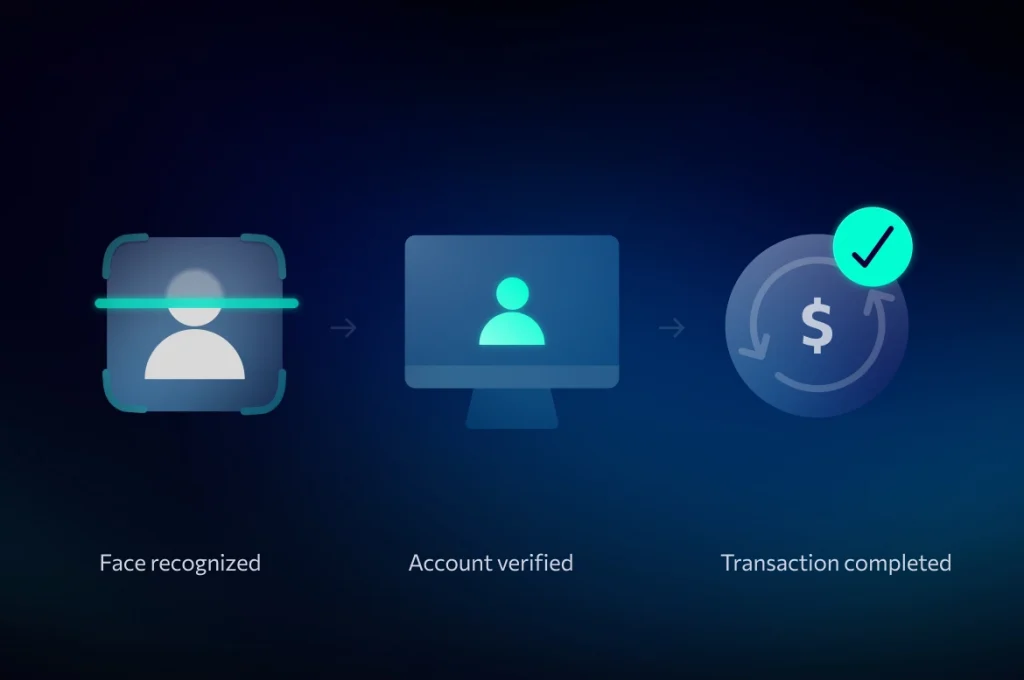
Facial recognition in Corporate Environment
The combination of video surveillance with facial recognition technology provides corporate and workplace environments with secure entry to their buildings and offices and restricted areas. The system enables automated employee time tracking and attendance management which results in better workplace security through its ability to monitor and control all access points.
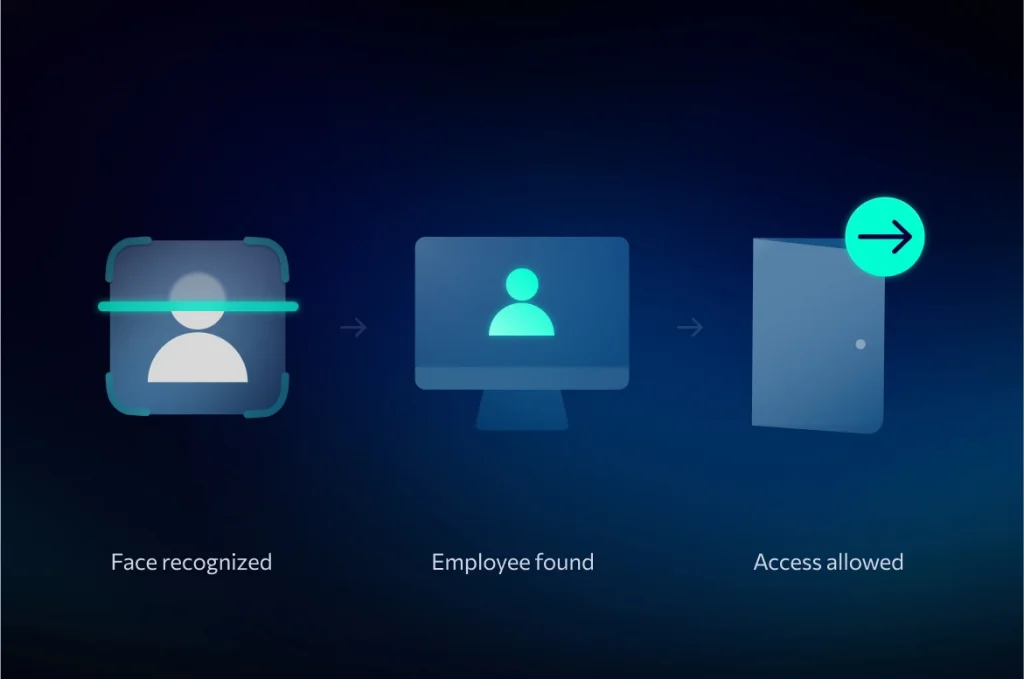
The adoption of facial recognition technology continues to expand throughout different business sectors. The usage of retina scanning biometrics remains limited but it shows exceptional accuracy when operating within specific parameters. The AI-based Analytics Platform maintains near-perfect accuracy in its operations which demonstrates its potential to serve as a dependable security solution.
The data collected by facial recognition systems enables organizations to extract important statistical information. All the collected data enables organizations to merge it with their existing business systems which results in process improvements and better operational performance.
The ongoing exploration of this transformative technology by organizations enables Telco to discover fresh ways to make their services stand out. The differentiation enables Telco to provide customers with complete advantages of using this technology as a cloud-based service.
Advantages the Aipix VAS solution as a Leading Cloud Video Analytics Platform
The VAS solution for telecom operators Aipix enables facial recognition capabilities. The telecom cloud video analytics service has facial recognition as one of its various possible applications. The Aipix platform enables real-time delivery of notifications and sound alerts and instant messages to mobile devices of customers. The video surveillance system ensures complete event awareness to telecom subscribers who can react immediately to critical situations. The Aipix solution opens multiple capabilities to users. Aipix enhanced with video analytics services gives telecom subscribers through its expertise which extends beyond facial recognition capabilities.
One key advantage of the Aipix platform is its flexibility. Platform can work with any RTSP video stream that meets the quality requirements of the deployment. Additionally, the Aipix VAS Platform for Telecom stands out for its scalability and fault tolerance. These characteristics make it well-suited for powering cloud-based video surveillance services with video analytics capabilities offered by telecom providers to their customers.
Discover how Aipix’s solutions can drive growth and innovation for your Telco business. Leave a request for consultation! It’s absolutely free!

